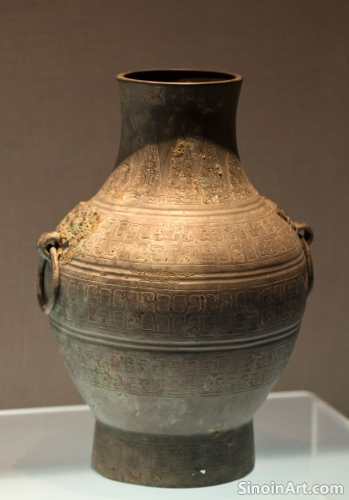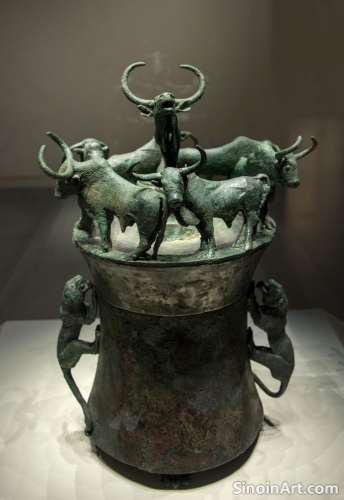The Use of Bronze in Ancient Chinese Astronomical Observatories: Instruments and Knowledge
|
Beyond portable instruments, bronze played a crucial role in the construction and equipping of ancient Chinese astronomical observatories. The durability and precision achievable with bronze made it an ideal material for creating the large-scale instruments needed to map the heavens and understand celestial movements. The bronze instruments used in these observatories helped to further codify the ancient Chinese understanding of astronomy and its place in their world.  Bronze was used to create various components for astronomical observatories, including sighting devices, graduated scales, and mounting systems, each carefully designed to support accurate observations of celestial bodies. These complex and sophisticated objects helped to facilitate accurate observations and the mapping of the stars and planets.  Armillary spheres, often made of bronze, were used to model the positions and movements of the sun, moon, planets, and stars, providing a tangible model for understanding celestial mechanics. The creation of these instruments demonstrates a high degree of understanding of mathematics and astronomy. These were not only scientific tools, they were also objects of great artistic and intellectual merit.  The use of bronze in these observatories also underscores the importance of astronomy in ancient Chinese culture, where the study of the heavens was closely tied to agricultural practices, religious beliefs, and the authority of the emperor. The interweaving of scientific understanding and cultural belief is a key element of the ancient Chinese worldview. The study of bronze instruments in these astronomical observatories helps to illuminate a fascinating chapter in the history of science and astronomy, demonstrating the intellectual achievements and technological prowess of ancient China. The innovations of the period helped to shape both the practice of science and the culture of the time. |
Tag : bronze observatories, Chinese astronomy, ancient instruments, armillary sphere, celestial mapping
Related information
- The Influence of Ancient Chinese Bronze Ware on Later Korean Art and Design
- Bronze Ware and the Development of Ancient Chinese Music Theory: The Role of Tuned Instruments
- Bronze Ware and the Development of Ancient Chinese Music Theory: The Use of Scales, Intervals, and Tuning
- The Influence of Bronze Ware on the Development of Chinese Calligraphy: Forms, Styles, and Materials
- The Development of Bronze in the Spring and Autumn Period: New Forms, Techniques, and Regional Styles
This article explores the influence of ancient Chinese bronze ware on later Korean art and design, highlighting the adaptation of Chinese forms and techniques, the development of unique Korean styles, and the role of cultural exchange in shaping artistic traditions.
This article explores the influence of bronze ware on the development of ancient Chinese music theory, highlighting the role of tuned instruments, especially bianzhong bells, and their impact on scales, harmonies, and the understanding of musical structure.
This article explores the influence of bronze ware on the development of ancient Chinese music theory, focusing on how the precise tuning of instruments led to a greater understanding of scales, intervals, harmony, and the overall structure of musical forms.
This article explores the reciprocal influence between bronze ware and the development of Chinese calligraphy, highlighting how bronze inscriptions shaped early forms of writing, established foundational principles, and contributed to the overall evolution of calligraphic styles.
This article explores the development of bronze ware during the Spring and Autumn period, highlighting new forms, innovative techniques, and the rise of distinctive regional styles, reflecting the growing artistic diversity of the time.